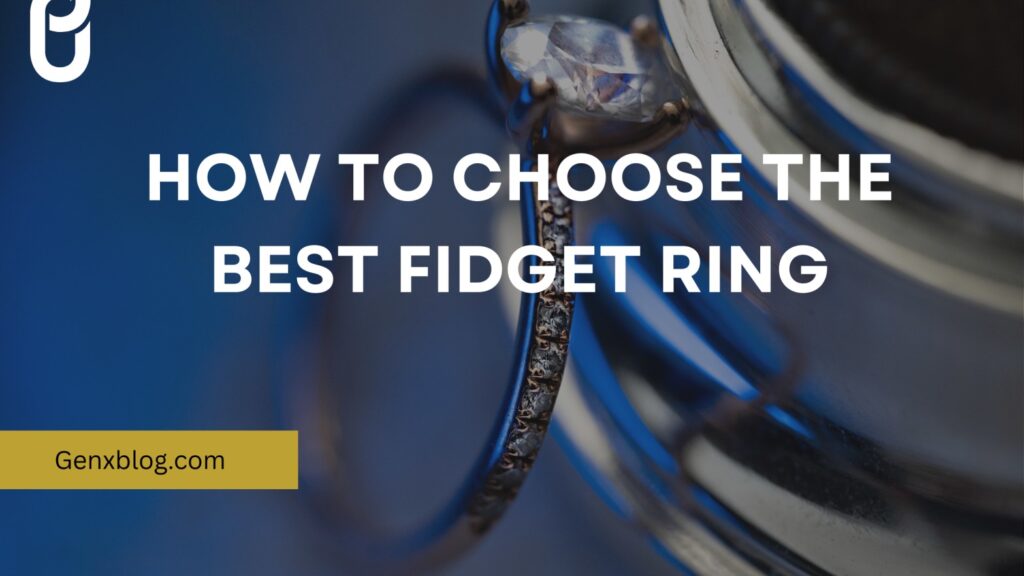Introduction
Do you ever feel restless, anxious, or find it hard to concentrate? You’re not alone! Many people, including kids and adults, struggle with staying focused or calming their nerves. A simple yet powerful tool that can help you.
Unlike regular fidget spinners, fidget rings are wearable, judicious, and stylish, making them perfect for school, work, or everyday life
In this article, we’ll explore:
- What fidget rings are and how they work
- Their benefits for focus, anxiety, and sensory needs
- The best types of fidget rings for different needs
- How to choose the perfect one for you
- Expert tips on using them effectively
At least, you’ll know exactly why fidget rings are becoming a must-have accessory for people of all ages
What Is a Fidget Ring?
A fidget ring, also known as an anxiety ring or spinner ring, is a piece of jewelry designed with movable components. These components, such as spinning bands or rotating beads, allow the wearer to engage in repetitive motions, providing a tactile experience that can be both soothing and grounding.
How Is It Different from a Fidget Spinner?
- Traditional fidget spinners are handheld toys that spin between your fingers.
- Fidget rings are worn like regular rings but have a hidden fidget feature, making them less distracting and more socially acceptable in classrooms or offices
Why Do People Use Fidget Rings?
Helps with Focus & Concentration
For kids (and adults! who get easily distracted, fidget rings provide a subtle way to release extra energy. The repetitive motion helps the brain stay engaged, especially during tasks like studying or listening in class
Reduces Anxiety & Stress
Anxiety rings work by giving your hands something to do, which can calm racing thoughts. Experts say the gentle movement acts like a mini mindfulness exercise, helping you feel more grounded.
Supports Sensory Needs
Children with ADHD, autism, or sensory processing disorders often benefit from tactile stimulation. Fidget rings provide a controlled sensory input, helping them feel more comfortable in overwhelming environments.
Helps Break Bad Habits
If you bite your nails, pick at your skin, or twist your hair, a fidget ring can redirect that nervous energy into a healthier habit
Benefits of Using a Fidget Ring
1. Anxiety and Stress Relief
Engaging with a fidget ring can help redirect nervous energy and reduce feelings of anxiety. The repetitive motion offers a calming effect, making it easier to manage stress in various situations, from work meetings to social gatherings.
2. Enhanced Focus and Concentration
For individuals who struggle with maintaining attention, especially those with ADHD, fidget rings can serve as a helpful tool. The subtle movement keeps the hands busy, which can aid in sustaining focus during tasks like studying or attending lectures.
3. Curbing Unwanted Habits
Fidget rings can act as a substitute for habits like nail-biting or hair-twirling. By providing an alternative outlet for fidgeting, they help in reducing such behaviors over time.
4. Sensory Stimulation
The tactile feedback from fidget rings offers sensory input that can be particularly beneficial for individuals with sensory processing needs. This stimulation can promote a sense of calm and well-being.
Types of Fidget Rings
Not all fidget rings are the same. Somes are the most popular styles:
| Type | How It Works | Best For |
|---|---|---|
| Spinner Rings | Has a rotating outer band you can spin with your thumb | Focus, anxiety |
| Beaded Anxiety Rings | Features loose beads that slide along the band | Sensory seekers, stress relief |
| Clicker Rings | Makes a soft clicking sound when pressed | Tactile & auditory feedback |
| Gyro Rings | Contains spinning balls inside a track | Deep focus, high-energy fidgeting |
| Adjustable Rings | Can be resized for a perfect fit | Kids & teens with growing fingers |
You May Also Like : What Tea Are Chinese Serving in Their Restaurants?
How to Choose the Best Fidget Ring

Picking the right fidget ring depends on your needs. Here’s what to consider:
1. Material Matters
- Stainless Steel: Durable & hypoallergenic
- Sterling Silver : Lightweight & stylish
- Silicone : Soft & comfortable for all-day wear
2. Size & Fit
- A ring that’s too loose can fall off (safety hazard!).
- A ring that’s too tight can be uncomfortable.
- Tip: Measure your finger or choose an adjustable ring.
3. Noise Level
- Silent rings (like spinner or beaded rings) are best for classrooms.
- Clicker rings are great for home use.
4. Design & Style
- Some people prefer minimalist designs (thin bands)
- Others like bold styles (engraved or gemstone rings)
Do Fidget Rings Really Work? Experts Weigh In
While there’s no magic cure for anxiety or ADHD, therapists and teachers have noticed positive effects from fidget rings:
- Occupational therapists often recommend them as part of sensory therapy.
- Teachers report that students using fidget rings are less disruptive and more focused.
- Mental health experts say they’re a low-risk tool for managing stress (but should be used alongside other strategies like therapy)
FAQs About Fidget Rings
1. Are fidget rings safe for kids?
Yes, but choose non-toxic materials and the right size to prevent choking hazards (best for ages 5+)
2. Can I wear a fidget ring all day?
Absolutely! Many people wear them daily without issues.
3. Do fidget rings help with ADHD?
They can! Many kids with ADHD find them helpful for focus and self-regulation
Final Thoughts: Should You Try a Fidget Ring?
If you or your child struggles with focus, anxiety, or sensory needs, a fidget ring could be a game-changer. They’re affordable, discreet, and effective plus, they look cool.
Ready to find your perfect fidget ring?




Leave a Reply